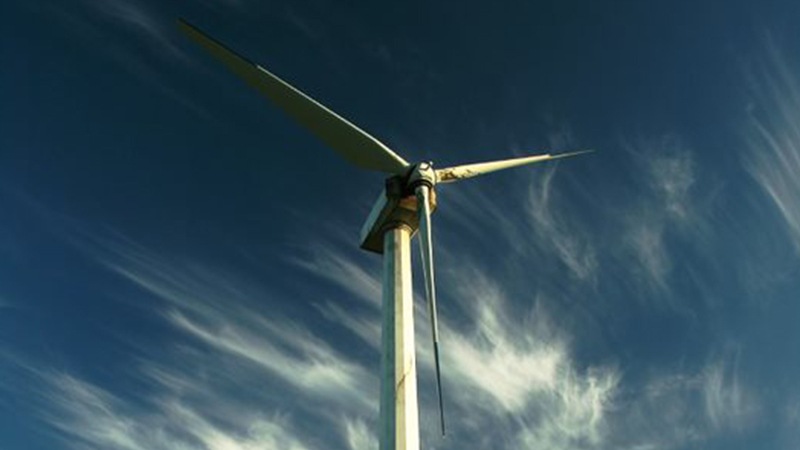First published in Business Green, Joao Pola, UK & Ireland CEO of Signify, reveals the secrets to successfully implementing a net zero goal
When I talk to my two young daughters and answer their questions about what I do at work, I explain that my job involves developing lighting that saves energy and ultimately improves our lives. I want them to be proud of what I do, and my fundamental belief is that putting sustainability at the heart of our purpose as a business is not only the right thing to do but is central to achieving profitable growth. Whether we’re parents or not, most of us want to create a better world.
On a wider level, we believe that existing Paris Agreement targets don’t go far enough – carbon neutrality by the end of the century will not stem the incoming tide. As a member of The Prince of Wales's Corporate Leaders Group, Signify – and me personally – are calling on European Governments to bring forward the deadline for carbon neutrality to 2050.

European Commission modelling shows that net-zero emissions would mean estimated benefits of up to 2% of GDP for Europe by 2050. On a UK-specific level, the Government suggests that placing ‘clean growth’ at the heart of the UK’s industrial strategy could see the number of ‘green collar jobs’ grow to two million, and the value of exports from the low carbon economy grow to £170 billion a year by 2030.
To achieve this, companies need to embrace a philosophy where sustainability is central to all that they do. Our own experience becoming carbon neutral in several markets, including the UK, proves this. That’s why we’ve committed to be completely carbon neutral worldwide by 2020.
So how can businesses go about making operations carbon neutral? Our experience highlighted four key steps that are critical to making the transition:
1.Science-based targets
To improve, first you need a baseline and achievable, impactful targets. Signing up to the Science-Based Targets Initiative (SBTI) is a straightforward way for organizations to align operations with the changes required.
2.Built environment
Buildings are responsible for approximately 40% of energy usage and 36% of CO2 emissions in EU, so improving the efficiency of old buildings and ensuring new buildings are carbon neutral by design will make significant inroads to your carbon reduction targets.
The World Green Building Council's Net Zero Carbon Buildings Commitment provides a framework that can help reduce energy demand and achieve net zero carbon emissions for all buildings by 2050. Similarly, the Building Research Establishment Environmental Assessment Method (BREEAM) is a sustainability assessment method used in infrastructure and building projects, setting standards for the environmental performance of buildings, focusing on a sustainable value across a range of categories, including energy usage, health and wellbeing.
3.Vehicles
Businesses own over half of all registered vehicles on the road. It’s crucial they lead the shift to electric vehicles through their investment decisions and influence on millions of staff and customers worldwide.
Building and electric vehicle policies need to be created in tandem, lowering costs that are associated with both. By working in tandem, the switch to electric vehicles can be an effective driver for building efficiency, which in turn is likely to provide the lowest-cost option to address electric vehicle grid infrastructure needs. Consider joining EV100 - a global initiative by The Climate Group bringing together forward-looking companies committed to accelerating the transition to electric vehicles (EVs) and making electric transport the new normal by 2030.
4.Renewable energy
Moving to renewable energy sources, combined with more efficient energy usage, will help break European reliance on energy imports, improving the competitiveness of European businesses and delivering the EU’s greenhouse gas emission reduction goals.

We need to take inspiration from our children and the visions of Greta Thunberg and Sir David Attenborough to create sustainable change that benefits our planet. Doing sustainable business and delivering growth and profitability are no longer mutually exclusive goals. We need EU Governments to agree to bring forward the deadline for European carbon neutrality to 2050 – and to back more aggressive targets for businesses to be at the leading edge of creating a more prosperous, sustainable world. In the UK and elsewhere, we’re proving that it’s possible – and we’re keen to share what we have learnt.
Signify (Euronext: LIGHT) is the world leader in lighting for professionals, consumers and the Internet of Things. Our Philips products, Interact systems and data-enabled services, deliver business value and transform life in homes, buildings and public spaces. In 2023, we had sales of EUR 6.7 billion, approximately 32,000 employees and a presence in over 70 countries. We unlock the extraordinary potential of light for brighter lives and a better world. We have been in the Dow Jones Sustainability World Index since our IPO for seven consecutive years and have achieved the EcoVadis Platinum rating for four consecutive years, placing Signify in the top one percent of companies assessed. News from Signify can be found in the Newsroom, on X, LinkedIn and Instagram. Information for investors is located on the Investor Relations page.
